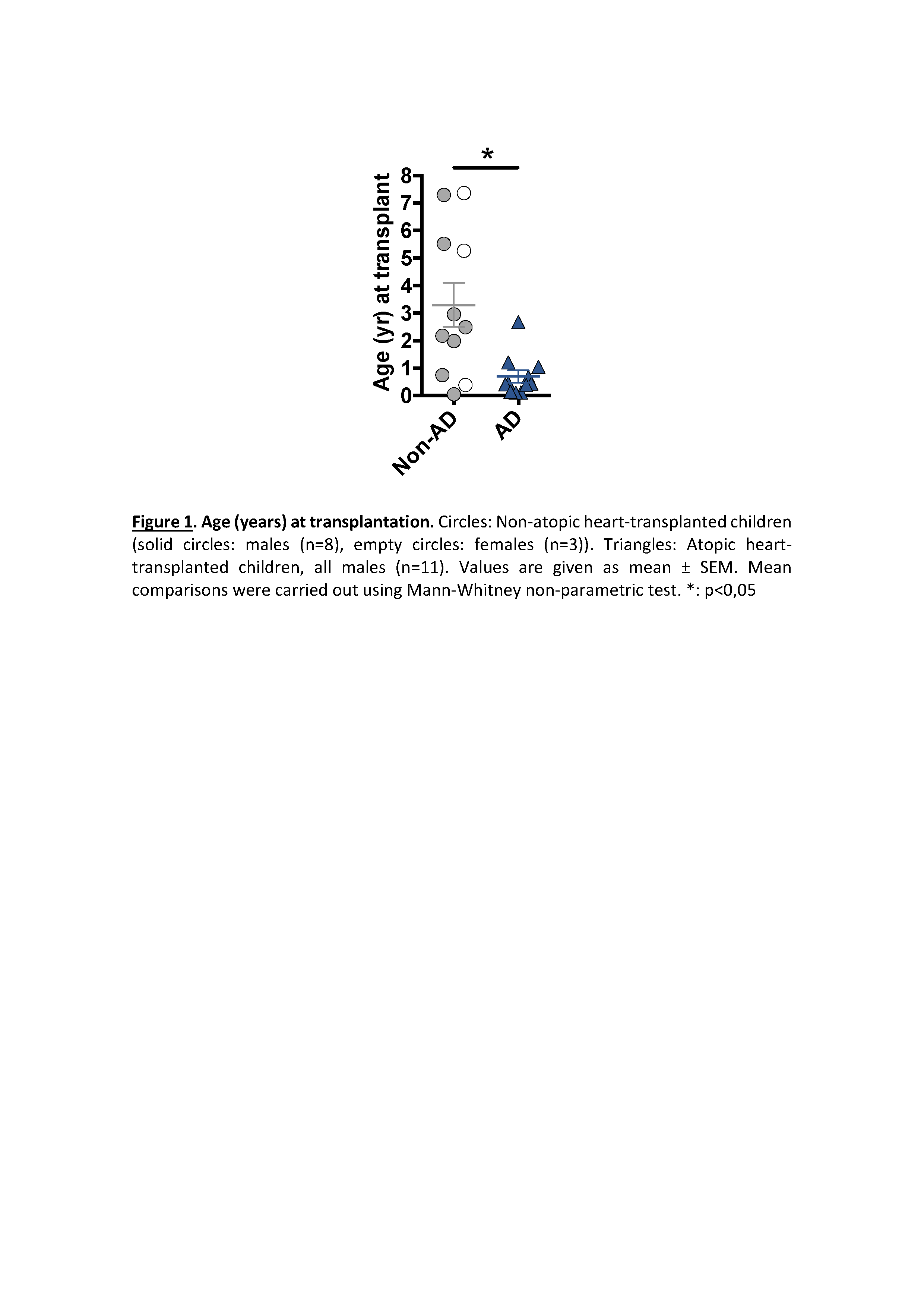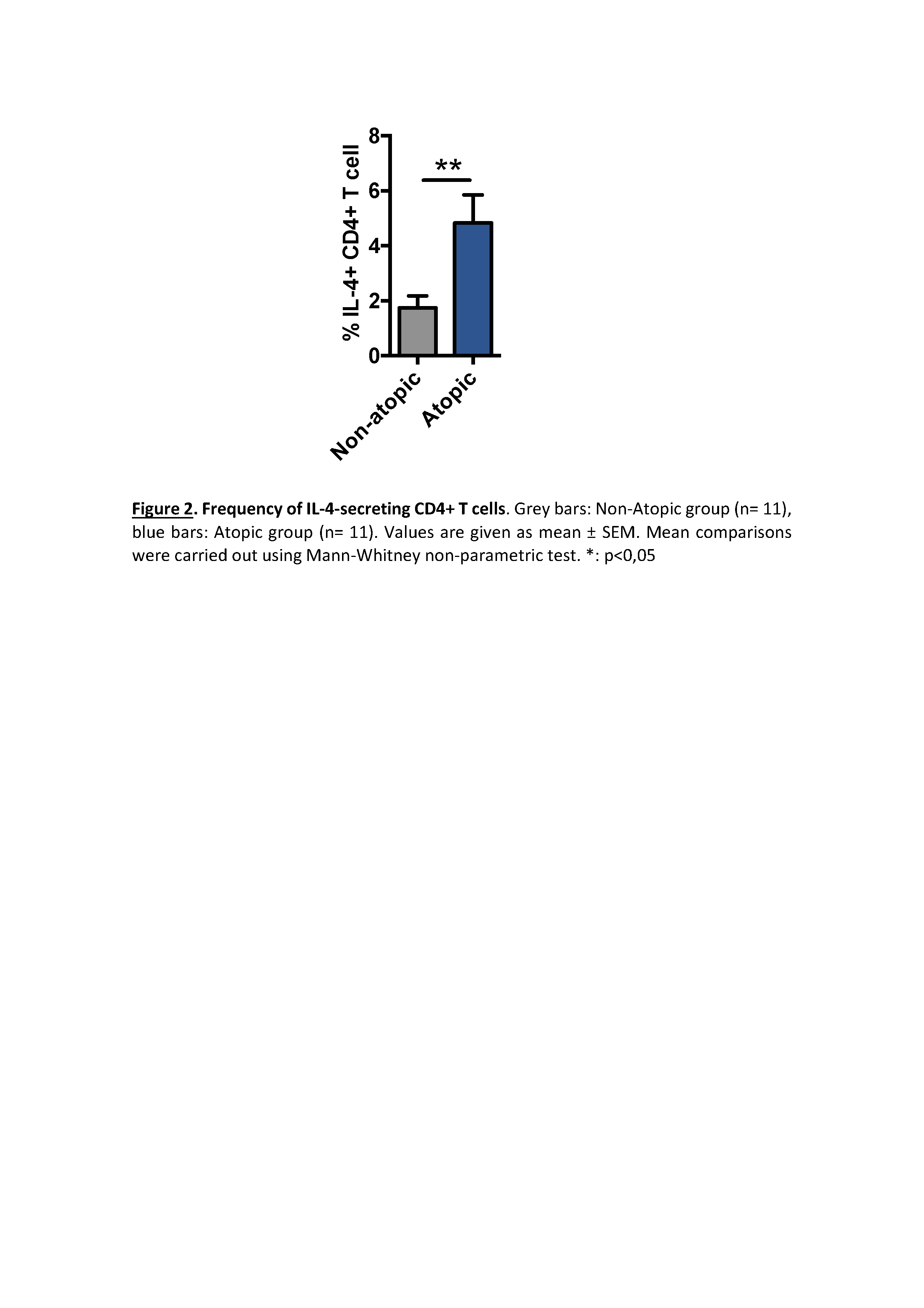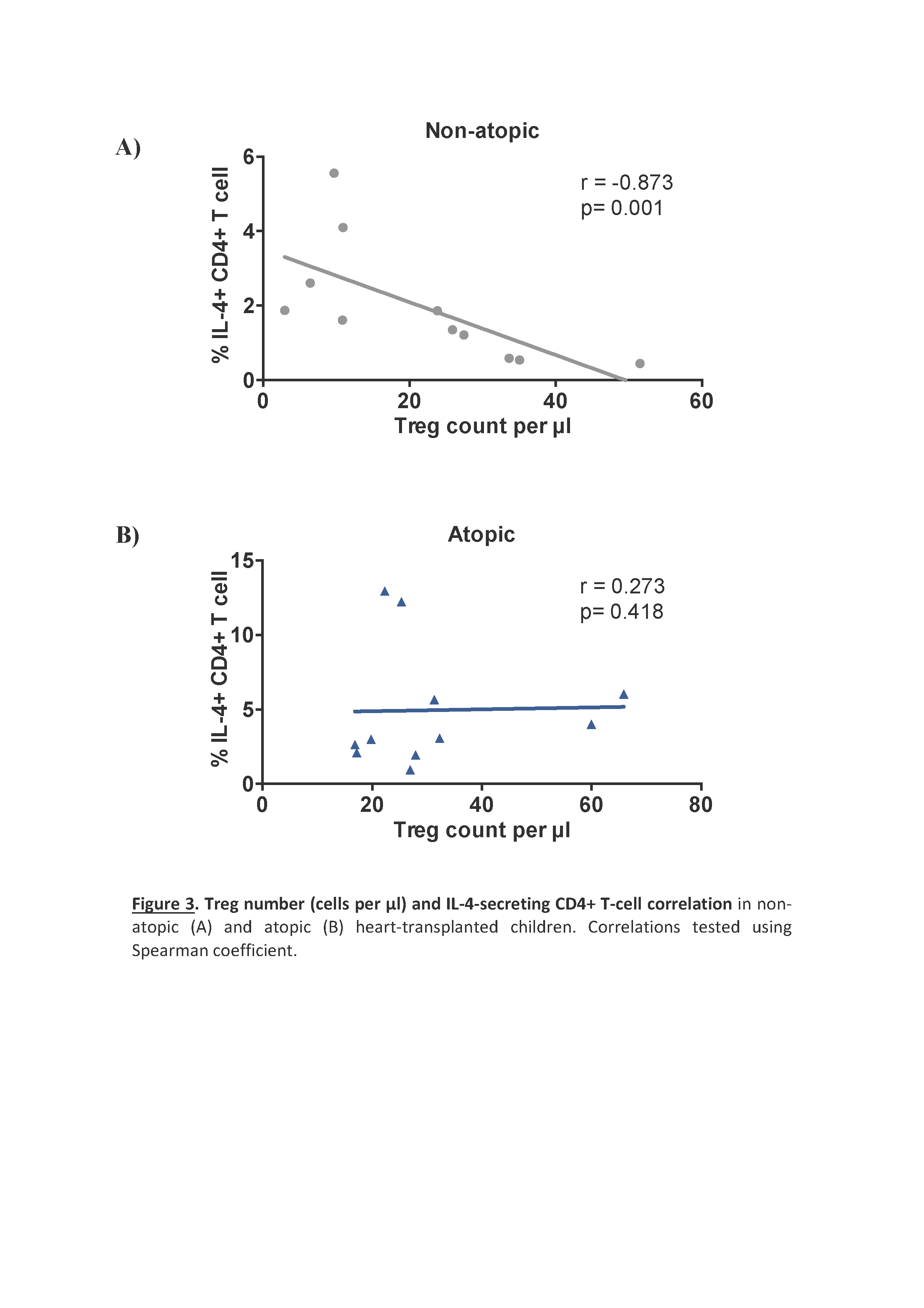Th1/Th2 Imbalance and Early Age to Transplantation is Associated to Atopic Dermatitis in Heart-Transplanted Pediatric Patients
Esther Bernaldo de Quiros Plaza1, Jacobo López-Abente1, Manuela Camino2, Nuria Gil2, Esther Panadero2, Minia Campos1,3, Elena Seoane1,4, Marjorie Pion1, Rafael Correa-Rocha1.
1Laboratory of Immune-regulation, “Gregorio Marañón” Health Research Institute (IISGM), Madrid, Spain; 2Pediatric Cardiology Unit, “Gregorio Marañón” Health Research Institute (IISGM), Madrid, Spain; 3Pediatric Dermatology Unit, “Gregorio Marañón” Health Research Institute (IISGM), Madrid, Spain; 4Pediatric Immune-allergy Unit, “Gregorio Marañón” Health Research Institute (IISGM), Madrid, Spain
Introduction: Heart transplantation is a successful strategy for the treatment of end-stage pediatric heart diseases. In recent years, improved therapies and clinical practice have led to increased graft survival, and consequently, chronic complications secondary to organ transplantation due in part to long-term immunosuppression have also emerged. Allergies and atopic diseases, such as atopic dermatitis (AD) are among these chronic complications. Despite that AD constitutes a frequent comorbidity in pediatric heart transplantation, little is known about the immune dysregulation underlying AD. Therefore, our objective was to unravel the immune mechanisms leading to AD in order to improve the clinical management of this disease in heart-transplanted children.
Material and Methods: We performed an extensive immune analysis comparing the values of different immune subsets (eosinophils, basophils, monocytes, T and B cells) but also their phenotype (naïve, memory, effector, activated) in peripheral blood from 11 AD heart-transplanted children and 11 age-matched non-AD heart-transplanted controls.
Results/Discussion: Interestingly, we observed that AD development was restricted to male children, and most of the patients in AD group were transplanted under 1 year of age (Figure 1). Heart-transplanted children with AD showed increased frequencies and absolute counts of eosinophil and plasmablasts. We also found a higher frequency of IL-4-secreting CD4+ T cells in the AD group that could represent an increased Th2 response in these patients (Figure 2). Values of Treg cells were comparable between non-AD children and AD children. However, while the non-AD group showed a clear negative correlation between Treg counts and the frequency of IL-4-secreting CD4+ T cells (Figure 3A), this association was lost in AD patients (Figure 3B), which could represent an inadequate Treg-mediated control of the effector CD4+ T-cell expansion.
Conclusion: The early age at transplantation and the use of immunosuppressors are critical factors that could disturb the immune homeostasis in a period that is crucial for the correct maturation of the immune system. This immune dysregulation could produce an imbalance in the Th1/Th2 immune responses, predisposing transplanted infants to AD. As a potential mechanism of this fact, the immune dysregulation may result in an impairment of Treg capacity to control IL-4-secreting CD4+ T cell expansion, which could lead to an activation of the Th2 responses in AD heart-transplanted infants.



Grant from Instituto de Salud Carlos III (ISCIII) co-financed by FEDER funds (ICI14/00282). Grant from Instituto de Salud Carlos III (ISCIII) co-financed by FEDER funds (PI15/00011). Pre-doctoral grant for J.L-A from IISGM.
